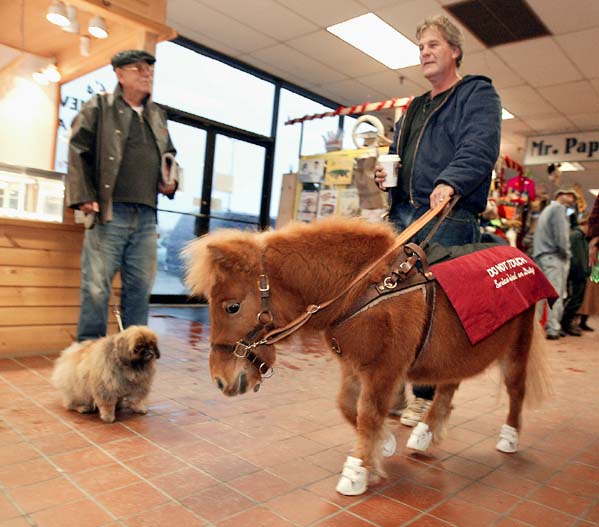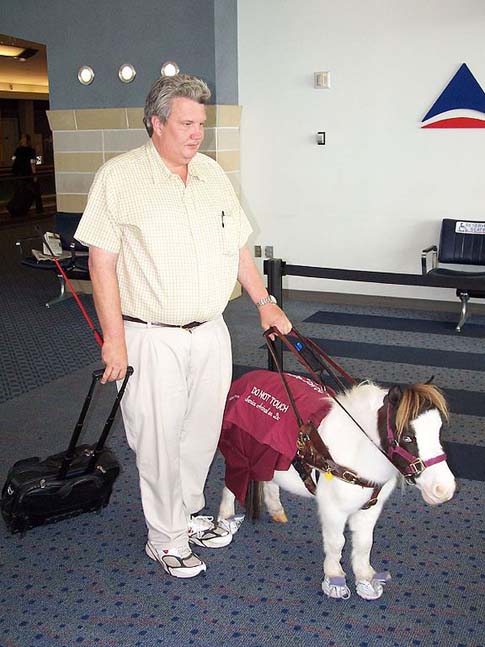Miniature Horses as Service Animals
You’ve heard of using dogs as service animals, but what about horses? Learn why mini horses are viable and effective guides.
by Jocelyn Pierce
The Guide Horse Program was founded in 1999 as an experimental program, to assess how miniature horses could provide assistance to visually impaired people in the United States. The Guide Horse Foundation works to “provide a safe, cost-effective and reliable mobility alternative for visually impaired people,” offering trained guide horses at no cost to the blind.
Why Horses?
According to the Guide Horse Foundation, horses are natural guide animals and have many attributes that make them an ideal candidate as a service animal.
In the wild, if a horse in a herd goes blind, sighted horses have observed guiding the blind horse within the herd. Because they are herd animals, they instinctively synchronize their movements with others, whether it to be other horses or people. Many blind people ride horses, relying on the horse to carry them safely.

Photo courtesy of The Guide Horse Foundation
Horses have a wide range of vision and are the only guide animals capable of independent eye movement, with the ability to track potential threats with each eye. Because they are prey animals, horses are naturally safety oriented and are always on the lookout for danger, guiding their master along the safest route and with good judgment. Horses are also capable of seeing well in darkness.
Compared to dogs, miniature horses live much longer lives. They can live to be more than 50 years old, with an average lifespan of 30-40 years. Guide dogs can typically work between 8-12 years, which means a blind handler would need to adjust to a new partner every seven or eight years. Both for emotional and economic reasons (it typically costs up to $60,000 per dog to breed, train and place in a home), horses may be a better option. In most cases, one guide horse would last one handler most of his lifetime.
Guide horses are also a practicable option for those with physically disabilities as they are strong enough to provide support, such as helping the handler rise from a chair.
Other characteristics that make horses effective guide animals include their great memory, calm nature, and high stamina.
How Guide Horses are Trained
Miniature guide horses are trained in the same areas as guide dogs and through systematic desensitization, similar to the training police horses undergo. On average, it takes about eight months to train a guide horse and they must demonstrate proficiency in specific areas before being placed with a handler.
Horses are taught basic lead work, in which the horse must move at the speed the handler commands, and be able to navigate both stationary and moving obstacles, as well as signal the handler when there is a step or ramp. The horse is trained in voice commands, and must be able to respond to 23 voice commands.
How to Apply for a Guide Horse
The Guide Horse Foundation is still an experimental program, but is seeking blind volunteers to participate. Guide horses are not for everyone. The best candidates for a guide horse should live in a suburban or rural area. Guide horse handlers must have a fenced outdoor area and barn for their horse when it is off duty. Guide horses are not well suited for city dwellers, as they do not have the same accessibility as a guide dog with limited space on public transportation such as buses or taxis.

Handlers must pass a test showing that they have the orientation and mobility skills necessary to safely navigate with a guide horse.
While guide horses may not be for everyone, they are a valid alternative, especially among horses lovers, those that have allergies to or are afraid of dogs, and those that want a guide animal with a longer lifespan.




